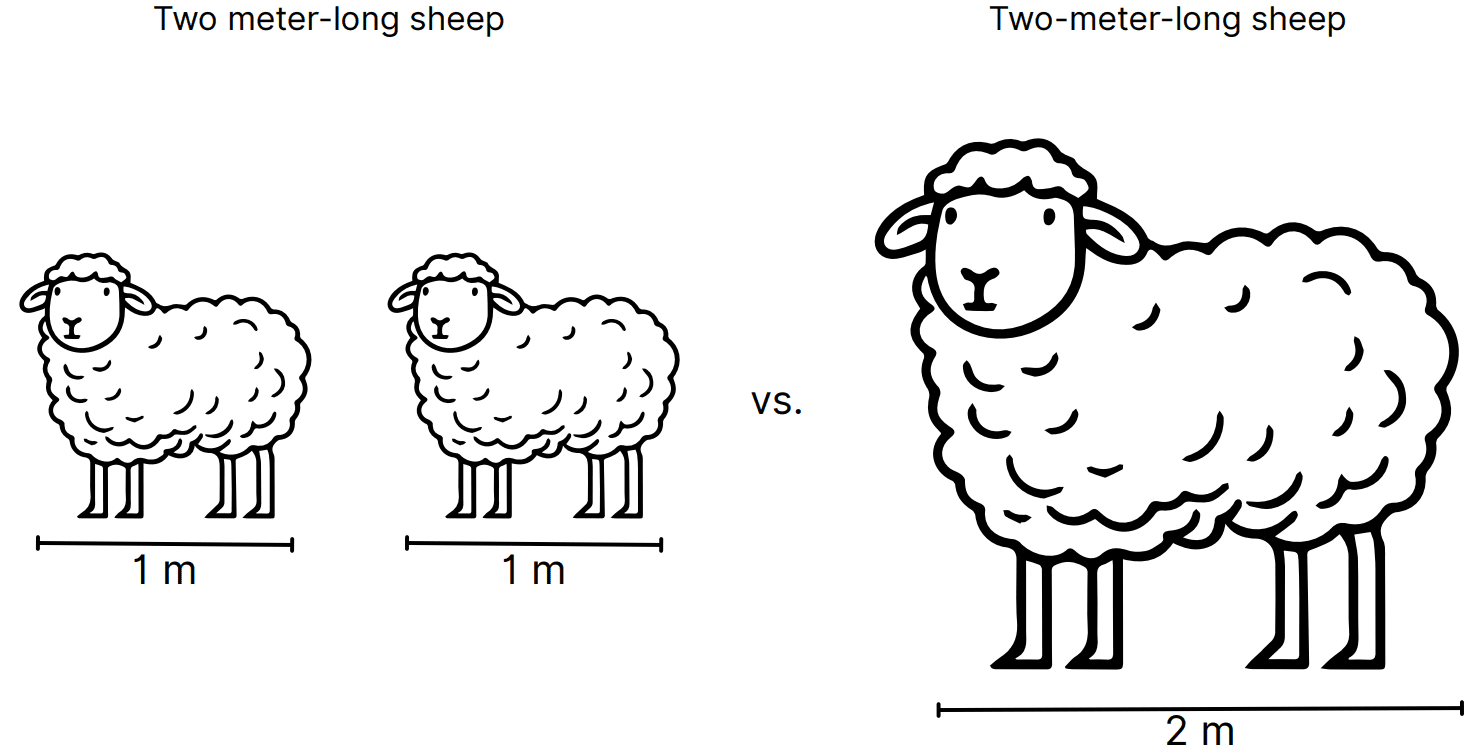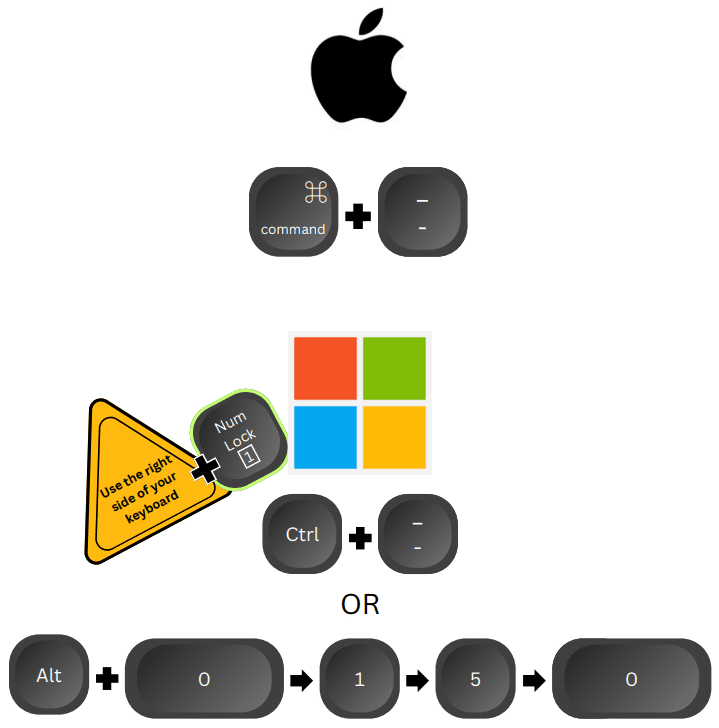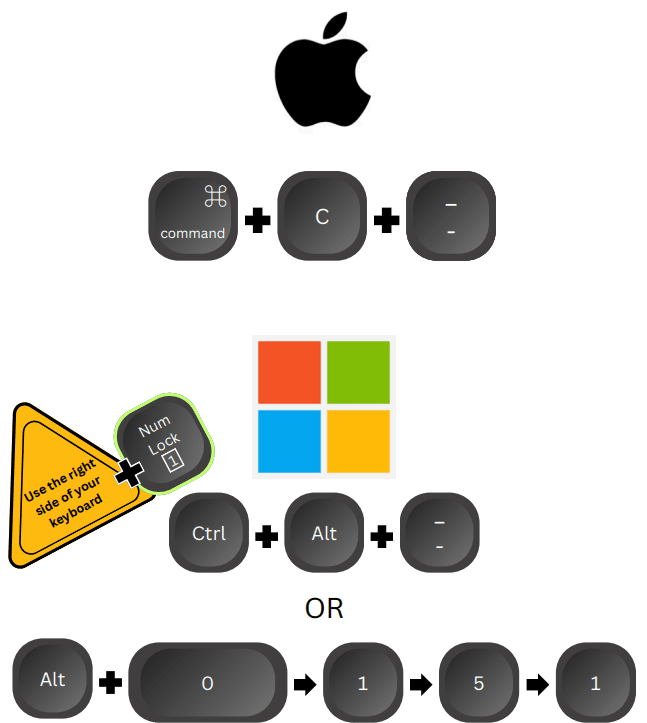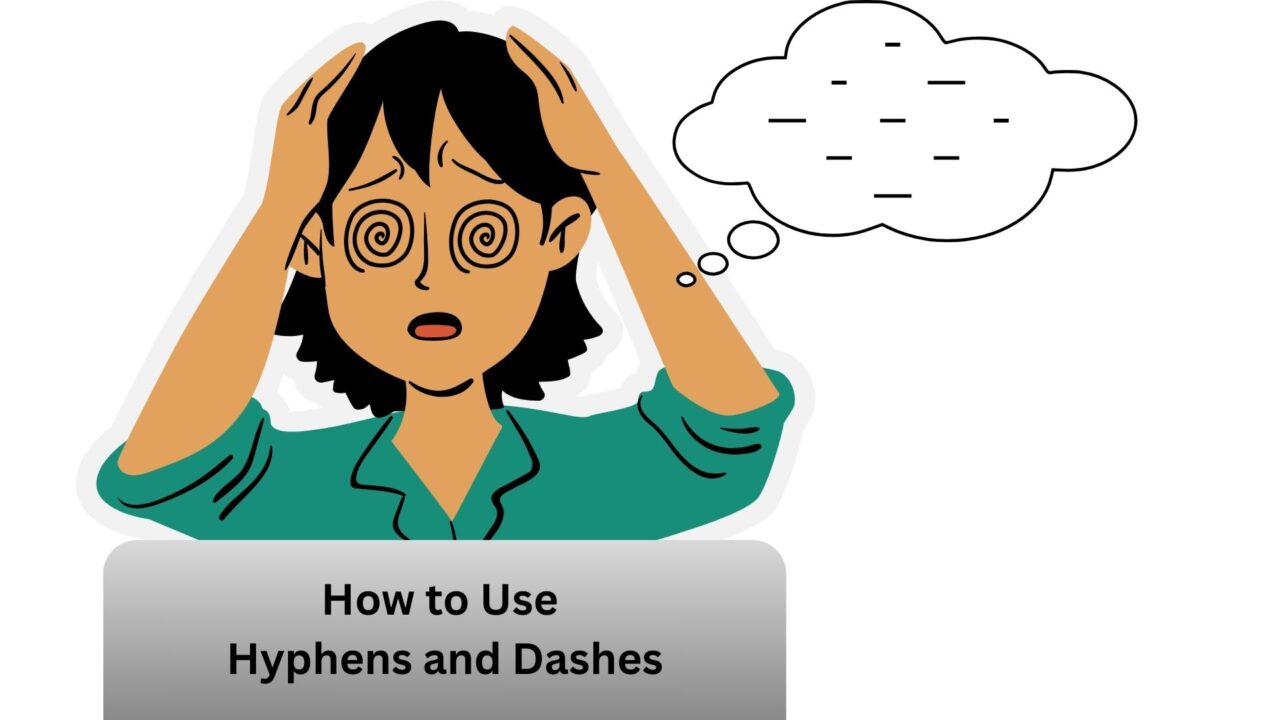How can something so menial as a horizontal line cause so many headaches? Hyphens and dashes may be small, but their correct use can make an enormous difference to the clarity and precision of written communications. Still, what determines “correct” hyphen and dash usage can vary depending on the kind of English (US vs. UK, for instance) and the style guide referred to, which adds yet another layer of complexity. But all is not lost: if you publish research in medicine or the life sciences, you don’t need to memorize every rule, and improving your understanding of hyphens and dashes can be a great way to increase the quality of your writing. In this article, we’ll discuss the difference between hyphens, en dashes, and em dashes; how to add them to your document from your keyboard; and some handy tricks to quickly fix incorrect dash usage without losing your sanity.
Hyphens (-)
Hyphens are the smallest and most commonly used of the dashes. They’re also the trickiest to get right—as you can see in the image to the right (or above, if you’re on a mobile), one small line makes a big difference in meaning. Whether you decide to use a hyphen will also depend on the style guide you’re following and the dictionary you consult, so be sure to check both. If you’re not sure whether to use a hyphen, keep in mind that most style guides prefer to use hyphens sparingly.

| When to use hyphens | How to use hyphens | Example |
| In compound modifiers | Compound modifiers are generally made up of an adjective or adverb and a noun (not necessarily in that order). Generally, compound words that precede a noun are hyphenated, while those that follow a noun are not hyphenated. Some exceptions are permitted depending on the style guide and to avoid reader confusion (e.g., the hyphen in “the doctor was good-looking” prevents readers from accidentally first reading “the doctor was good”). Never hyphenate a word ending in ly. | The placebo-controlled trial was well planned. However, the highly regarded drug was ineffective in all patient groups. |
| In prefixes and suffixes | Hyphens may also be used between prefixes/suffixes and the word they’re attached to. Whether the prefix/suffix is hyphenated or simply added onto the word will again depend on the dictionary or style guide used. Most style guides prefer a closed style (i.e., no space or hyphen between a prefix/suffix and the modified word). However, they’re usually open to exceptions if the word would look strange without a hyphen. | Although turmeric is well known for its anti-inflammatory and antioxidant properties, ultra-American carnivore dieters forgo all spices. |
| Between numbers and units | Hyphens can also be used to indicate relationships between numbers and units. However, 1) you generally shouldn’t hyphenate a number and abbreviated unit, 2) make sure you hyphenate all the correct parts of the number/unit combination, and double check your meaning before accepting suggestions from proofreading programs (in the example image above, many programs will tell you that the hyphenation for the sheep on the left is incorrect and suggest that you change it to the hyphenation for the image on the right—this is another example of why we can’t replace editors with AI). | The 50 m fence enclosed a 12.5-meter-wide pasture encompassing 155 square meters. Two meter-long sheep grazed within it. |
En Dashes (–)
En dashes are the middle guys of the dash world, and there’s a decent chance that you’ve never heard of them before: some style manuals will tell authors to use a hyphen instead. That’s not always the case, though, and properly used en dashes can help communicate information more clearly.
The image on the right (or above, if you’re on a mobile) illustrates how to use your keyboard to insert an en dash into text.

| When to use en dashes | How to use en dashes | Example |
| To denote parenthetical content (British English only) | In British English, en dashes are more commonly used to set off parenthetical content than em dashes. In this case, the en dash should always have a space before and after it. | Fermented proteins – not to be confused with traditionally fermented food products – involve… |
| To show a range | En dashes are commonly used in ranges, particularly number ranges. When used this way, they don’t take a space on either side, and can be used, in a way, to substitute for the words to, until, or through. However, you should not use an en dash within a range if the range is preceded by between or from. | Dr. Wilson (1981–) has published work in the manual, which you can find on page 13–24. You can meet them on Monday at 12:00 p.m.–2:00 p.m. or from Tuesday to Thursday between 4:00 p.m. and 5:00 p.m. *Note: this is just an example; dates and times should not be inconsistently formatted like this.* |
| To indicate a relationship between two nouns | En dashes are also used to indicate relationships between two nouns that could otherwise take a slash (/). In this way, an en dash acts as a specialized hyphen that helps readers better distinguish relationships. Note in the example that Sigma–Aldrich takes an en dash because it is a single company created from a merger between two companies. If it was written with a hyphen (which it sometimes is), readers may instead think that the company was named after a founder with the hyphenated last name Sigma-Aldrich. | We acquired the lipid–water mixture from Sigma–Aldrich and followed the protocol presented by Smith-Jones et al. |
| To create compound adjectives that include an open or hyphenated compound word | When a compound adjective includes an open compound (e.g., Norwalk virus) or a hyphenated compound (e.g., know-it-all), you can use an en dash instead of a hyphen to signal a link across more than two words. Although this can be a handy punctuation tool, this use of en dashes isn’t well known to many readers, so you may want to seek out other solutions before settling on this one. | People who identify as anti–cultured meat aren’t necessarily pro–animal slaughter. Yet their stance is rarely pro-animal, either. |
Note: The en dash is often mistakenly used as a minus sign (−), but they are distinct characters.
Em Dashes (—)
Em dashes are the largest of the three dashes. While they can be easily replaced by other forms of punctuation, proper use of em dashes can improve the clarity of long, complex sentences. Just be careful not to overuse them: in addition to bothering readers, you may also be accused of using AI.
The image on the right (or above, if you’re on a mobile) illustrates how to use your keyboard to insert an em dash into text.
The table below is by no means a comprehensive explanation of em dash use, particularly because different style guides (e.g., the American Medical Association Style Guide, the Chicago Manual of Style) will have different rules regarding em dash use. That said, the rules in the table below are generally consistent and are the most relevant uses of em dashes for running text in science.

| When to use em dashes | How to use em dashes | Example |
| To denote parenthetical content | If you have a long sentence that already contains many commas, try breaking some of the content up with an em dash to make it clearer. If you’re not sure whether an em dash is appropriate, think of them as a harder break than a comma and a softer break than parentheses. Whether an em dash is offset by spaces (i.e., open) or not (i.e., closed) depends on the style guide, but you should ensure that it’s consistent throughout. | Fermented proteins—not to be confused with traditionally fermented food products—involve… |
| In place of a colon | You can also use em dashes as a (sometimes softer) alternative to a colon preceding a list. However, a colon may still be the more appropriate choice if the sentence ends with the list and the list is quite long and/or has many items. | Patients experiencing digestive issues should consult their primary care physician before consulting with other relevant medical professionals—dietitians, gastroenterologists, etc. |
Tips and Tricks to Fix Incorrect Hyphen and Dash Use
Now that you know how to use hyphens and dashes, you may realize that you’ve introduced some errors into the text you’ve been working on. While there’s no easy way to fix all hyphen and dash errors quickly and easily, my time as an editor has taught me that clever use of Microsoft Word’s find and replace function can save a lot of time, especially if you can make effective use of wildcards.
In the table below, I’ve put together a list of find and replace searches that you can use to quickly resolve some of the most common issues. Please note that these aren’t entirely foolproof solutions, as you may still stumble upon some incorrect uses due to differences in formatting/word order, etc. Still, they can certainly save you a lot of time.
| Description | Use wildcards? | Find | Replace |
| Find all uses of ly followed by a hyphen and replace them with ly followed by a space. | No | ly- | ly *Remember to copy the space following ly |
| To find all hyphens used in a range and replace them with en dashes | Yes | ([0-9])(-)([0-9]) | \1–\3 |
| replace incorrect en dash use preceded by between | Yes | (etween )([0-9]@)(–) | \1\2 and *Remember to copy the space following and |
| replace incorrect en dash use preceded by between with decimals | Yes | (etween )([0-9]@[.])([0-9]{1,2})(–) | \1\2\3 and *Remember to copy the space following and |
| replace incorrect en dash use preceded by from | Yes | (rom )([0-9]@)(–) | \1\2 to *Remember to copy the space following to |
| replace incorrect en dash use preceded by from with decimals | Yes | (rom )([0-9]@[.])([0-9]{1,2})(–) | \1\2\3 to *Remember to copy the space following to |
